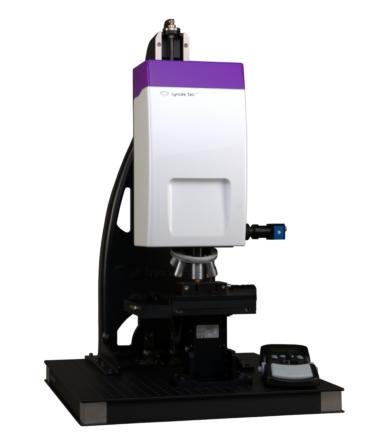Ocular Drug Delivery System: Improving Quality of Life
The ocular drug delivery system is a crucial aspect of ophthalmic therapeutics, aimed at targeting and treating various eye diseases. Due to the eye's unique anatomy and physiology, delivering drugs effectively poses significant challenges. The ocular barriers, such as the corneal epithelium, conjunctiva, and blood-ocular barriers, restrict drug absorption and penetration, necessitating innovative delivery methods to achieve therapeutic efficacy.
Topical administration is the most common method, where Ocular Drug Delivery System are applied directly to the eye in the form of eye drops or ointments. However, this method suffers from low bioavailability due to rapid tear turnover, nasolacrimal drainage, and poor corneal permeability. To enhance drug retention and absorption, strategies such as mucoadhesive formulations, in situ gelling systems, and colloidal carriers like nanoparticles and liposomes are employed. These advanced formulations prolong drug residence time on the ocular surface, improving therapeutic outcomes.
Another approach is the use of intraocular injections, delivering drugs directly into the anterior or posterior segments of the eye. Intravitreal injections are particularly effective for treating retinal diseases, as they bypass the ocular barriers and provide high drug concentrations at the target site. However, this invasive method carries risks such as infection, retinal detachment, and increased intraocular pressure, limiting its frequent use.
Sustained-release implants are emerging as a promising solution, offering controlled and prolonged Ocular Drug Delivery System release.These biodegradable or non-biodegradable implants are surgically placed inside the eye, gradually releasing the drug over weeks or months. This approach reduces the need for repeated administrations, improving patient compliance and minimizing side effects. Examples include dexamethasone implants for macular edema and fluocinolone acetonide implants for chronic uveitis.
Another innovative strategy is the development of ocular inserts, contact lenses, and punctal plugs. Ocular inserts are solid devices placed in the conjunctival sac, releasing the drug in a controlled manner. Drug-eluting contact lenses enhance drug delivery by directly contacting the cornea, providing sustained release and improved bioavailability. Punctal plugs, inserted into the tear ducts, prevent drainage of the drug-laden tears, increasing drug retention on the ocular surface.
Gene therapy and nanotechnology are also gaining attention in ocular drug delivery. Gene therapy involves delivering therapeutic genes to the eye, offering potential cures for genetic eye disorders. Nanotechnology-based carriers, such as dendrimers and nano micelles, enhance drug solubility, stability, and targeted delivery, opening new avenues for treating ocular diseases.
Despite these advancements, several challenges remain in ocular drug delivery, including the need for non-invasive, patient-friendly methods and overcoming the ocular barriers. Future research aims to develop novel formulations and delivery systems that enhance drug bioavailability, minimize side effects, and provide sustained therapeutic effects. The integration of personalized medicine, nanotechnology, and regenerative therapies holds great promise for revolutionizing ocular drug delivery and improving the quality of life for patients with eye diseases.
Ocular Drug Delivery System: Improving Quality of Life
The ocular drug delivery system is a crucial aspect of ophthalmic therapeutics, aimed at targeting and treating various eye diseases. Due to the eye's unique anatomy and physiology, delivering drugs effectively poses significant challenges. The ocular barriers, such as the corneal epithelium, conjunctiva, and blood-ocular barriers, restrict drug absorption and penetration, necessitating innovative delivery methods to achieve therapeutic efficacy.
Topical administration is the most common method, where Ocular Drug Delivery System are applied directly to the eye in the form of eye drops or ointments. However, this method suffers from low bioavailability due to rapid tear turnover, nasolacrimal drainage, and poor corneal permeability. To enhance drug retention and absorption, strategies such as mucoadhesive formulations, in situ gelling systems, and colloidal carriers like nanoparticles and liposomes are employed. These advanced formulations prolong drug residence time on the ocular surface, improving therapeutic outcomes.
Another approach is the use of intraocular injections, delivering drugs directly into the anterior or posterior segments of the eye. Intravitreal injections are particularly effective for treating retinal diseases, as they bypass the ocular barriers and provide high drug concentrations at the target site. However, this invasive method carries risks such as infection, retinal detachment, and increased intraocular pressure, limiting its frequent use.
Sustained-release implants are emerging as a promising solution, offering controlled and prolonged Ocular Drug Delivery System release.These biodegradable or non-biodegradable implants are surgically placed inside the eye, gradually releasing the drug over weeks or months. This approach reduces the need for repeated administrations, improving patient compliance and minimizing side effects. Examples include dexamethasone implants for macular edema and fluocinolone acetonide implants for chronic uveitis.
Another innovative strategy is the development of ocular inserts, contact lenses, and punctal plugs. Ocular inserts are solid devices placed in the conjunctival sac, releasing the drug in a controlled manner. Drug-eluting contact lenses enhance drug delivery by directly contacting the cornea, providing sustained release and improved bioavailability. Punctal plugs, inserted into the tear ducts, prevent drainage of the drug-laden tears, increasing drug retention on the ocular surface.
Gene therapy and nanotechnology are also gaining attention in ocular drug delivery. Gene therapy involves delivering therapeutic genes to the eye, offering potential cures for genetic eye disorders. Nanotechnology-based carriers, such as dendrimers and nano micelles, enhance drug solubility, stability, and targeted delivery, opening new avenues for treating ocular diseases.
Despite these advancements, several challenges remain in ocular drug delivery, including the need for non-invasive, patient-friendly methods and overcoming the ocular barriers. Future research aims to develop novel formulations and delivery systems that enhance drug bioavailability, minimize side effects, and provide sustained therapeutic effects. The integration of personalized medicine, nanotechnology, and regenerative therapies holds great promise for revolutionizing ocular drug delivery and improving the quality of life for patients with eye diseases.






